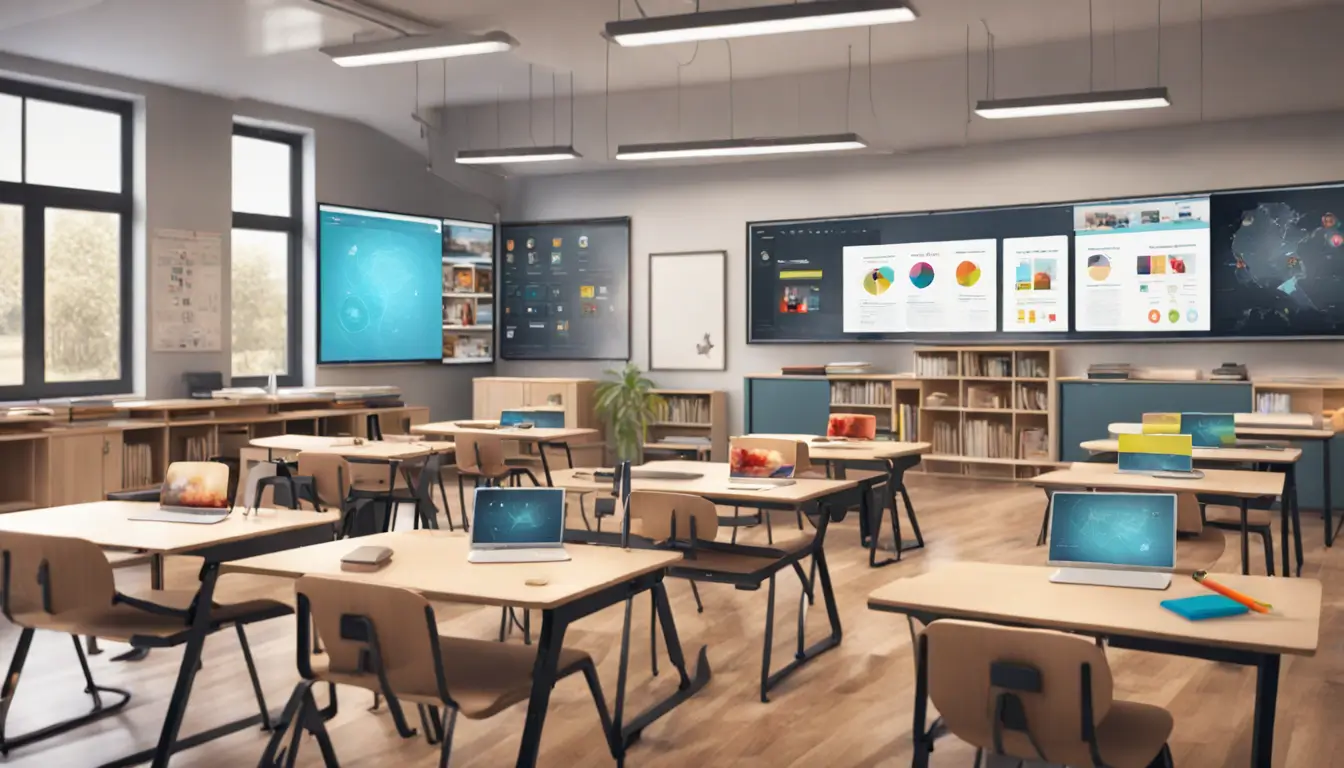Introduction to Digital Signage for Education
Ever feel like your school could use a fresh way to share information? Curious about how modern tech can boost student and staff communication? Have you heard about digital signage for education but don’t know where to begin?
In this article, we’ll dive into the exciting world of digital signage. You’ll discover why schools everywhere are adopting it, how you can set it up easily, and the best tips to make it work smoothly. We’ll also share real stories from schools that are already seeing great results. Stay tuned to learn how digital signage can transform your school’s communication and engagement!
Why Use Digital Signage in Educational Institutions?
Using digital signage in educational institutions can really brighten up the way schools share information. Let’s talk about why more schools are choosing digital signs and how they can make life easier for everyone on campus.
First off, digital signs help get messages out quickly. Imagine you need to tell students about a schedule change or an upcoming event. With digital signage, you can update the info right away, so everyone sees it in real-time. No more outdated posters or missed announcements!
Plus, digital signs can make learning more fun. Think about how engaging videos and interactive displays can be. Students are more likely to pay attention to a cool video than a plain text notice. This makes digital signage a great tool for grabbing their attention and keeping them informed.
Here are some key benefits:
- Better Communication: Digital signs make it easy to share important updates with students, teachers, and visitors. Whether it’s about a school play, an emergency, or a daily schedule, everyone stays in the loop.
- Boosted Engagement: Using multimedia like videos and interactive elements keeps students interested. It’s a more exciting way to share information than just using paper and ink.
- Flexible Content: Schools can display a variety of content such as upcoming events, important announcements, or even student achievements. Digital signage is flexible and can be easily updated to fit different needs and audiences.
How to Implement Digital Signage in Schools
Are you thinking about bringing digital signage to your school? Let’s go through the steps together to make it easy and effective.
First, you need to choose the right hardware. This means picking the best screens for your school. Consider these points:
- Screen Size: Think about where you’ll place the screens. Larger spaces need bigger screens.
- Resolution: High-resolution screens are easier to read and look more professional.
- Durability: Schools are busy places. Choose screens that can handle a lot of use.
Next, let’s talk about software. You need software that helps you manage what you show on the screens. Easy-to-use software is best. It should let you schedule content and create playlists. A good example is EasyTV’s platform, which makes it simple to manage your digital signage for education.
A Content Management System (CMS) is also crucial. This is the tool you use to organize and update your content. Look for one that offers:
- Templates: Pre-made layouts save you time.
- Customization: Make your content fit your school’s style.
- Analytics: See which content works best and improve from there.
Now, it’s time to set up your digital signage. Install the screens in places where students and staff will see them often. Make sure they’re connected and test them to ensure everything works.
Creating content is where you can get creative. Mix text, images, and videos to keep things interesting. For example, use it to share announcements, show off student projects, or promote events. Keep your content bright and easy to read.
Finally, keep your digital signage content fresh. Regularly update it so it’s always relevant. Use your CMS to see what content people are engaging with and make changes as needed.
By following these steps, you’ll set up digital signage in your school that truly enhances communication and engagement. With the right tools and a bit of creativity, your digital signage can make a big difference in your school community.
What Are the Best Practices for Educational Digital Signage?
Using digital signage for education can transform how information is shared and received in schools. But to do it right, there are a few best practices you should follow to keep students and staff interested and informed.
First, focus on creating great content. Make sure the information is not only useful but also visually appealing. Highlight student achievements, upcoming school events, important announcements, and even educational videos. Mixing up the content will keep everyone engaged and cater to different interests.
Next, think about scheduling. Plan ahead and schedule your content wisely. Important announcements should appear at the right times, and events need to be promoted well in advance. Updating the content regularly keeps it fresh and relevant. For example, you could update the screens weekly with new achievements or monthly with important dates.
To keep your digital signage interesting and engaging, consider a few more tips:
- Interactive Elements: Add touch-screen features or simple polls and quizzes to make the experience interactive.
- Get Students Involved: Let students help in creating content. They can suggest ideas on what they want to see, making the screens more relatable to them.
- Ask for Feedback: Create a way for students and staff to share their thoughts about the content. Use their feedback to make it better.
- Stay Consistent: Keep the visual style and branding uniform across all content to reinforce the school’s identity.
By following these best practices, you can make sure your digital signage for education is a valuable tool that keeps everyone in the school community informed and engaged.
Case Studies: Successful Digital Signage in Schools
Using digital signage for education in schools has made a big difference in how schools communicate and engage with students. Let’s look at some real examples to see the benefits.
Springfield High School saw amazing changes after adding digital signage. They put digital screens in busy places like the cafeteria, library, and common areas. This helped everyone get updates on events, schedule changes, and important announcements quickly and clearly. As a result, students and teachers were less confused and more involved.
Maple Elementary used digital signage to celebrate student achievements. They showed student artwork, project highlights, and success stories on the screens. This made the school a more positive and inspiring place. Kids felt proud and excited to see their work displayed. The interactive screens also encouraged creativity and participation, making learning more fun and dynamic.
These examples show that digital signage for education can improve communication and create a better learning environment. Schools like Springfield High and Maple Elementary have used digital displays to connect with their students and staff in a meaningful way. By sharing important information and celebrating achievements, digital signage makes schools more engaging and effective.
Conclusion: Transform Your Educational Environment with Digital Signage
Imagine a school where information flows effortlessly, and everyone stays in the loop. With digital signage for education, this vision can become a reality. It’s about creating content that’s not only useful but also eye-catching and fun.
Think about how much easier it would be if important announcements, student achievements, and school events were just a glance away. The trick is to mix up the content to keep it fresh and relevant. Nobody wants to see the same thing over and over.
Planning is key. When you schedule your content wisely, you ensure that the right messages are displayed at the right times. This keeps everyone informed and ready for what’s next. Regular updates mean there’s always something new to see, whether it’s weekly news or monthly highlights.
Want to make your digital signs even more engaging? How about adding some interactive elements? Touch-screen features or simple polls can make the experience interactive. And why not involve students in creating content? Their input can make the screens more relatable and exciting.
Feedback is gold. Creating a way for students and staff to share their thoughts about the content can provide valuable insights. Use this feedback to improve what you display. Finally, stay consistent with your visual style to reinforce the school’s identity. This creates a cohesive and professional look.
By following these tips, your digital signage for education can become a powerful tool that keeps everyone in your school community informed and engaged. So why wait? Start transforming your school’s communication today and make staying informed easier and more fun for everyone.

